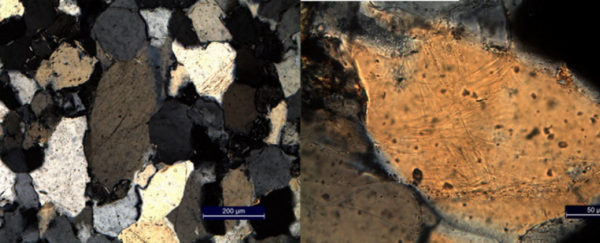Australian scientists have discovered a pair of colossal impact sites in the country's arid centre, believed to be the ancient remnants of a meteorite that split in two, moments before hitting Earth. The impact sites each stretch to about 200 kilometres, and taken together, form the largest impact site ever discovered.
"Together, jointly they would form a 400 kilometre structure, which is the biggest we know of anywhere in the world," lead researcher Andrew Glikson from the Australian National University (ANU) in Canberra told Clarissa Thorpe at ABC News. "The consequences are that it could have caused a large mass extinction event at the time, but we still don't know the age of this asteroid impact and we are still working on it."
The size of the impact zones means the meteorite halves would have each probably been about 10 kilometres across, says Glikson, and he suspects the impact happened more than 300 million years ago.
Over the hundreds of millions of years following the impact, the craters have been covered over by layer upon layer of sediment, and were only revealed through several bouts of geothermal drilling. Further investigation revealed that the impact zones spanned an area in Australia's Warburton Basin that encompasses parts of South Australia, the Northern Territory, and Queensland.
Just last week, it was reported that twin impact sites in Canada could have been created by two separate meteorites that just happened to find almost the exact same spot on Earth, rather than twin meteorites that slammed into the planet simultaneously. When it comes to the Australian impact zones, however, Glikson's team have matched enough materials from the two to convince them that they were formed from the same meteorite. They've published the results of their analysis in the journal Tectonophysics.
The burning question now is, considering it's pretty much agreed upon that a meteorite doomed the dinosaurs 65 million years ago, what, erm, impact did this even more masisve event have on life when it hit Australia millions of years earlier?
"When we know more about the age of the impact, then we will know whether it correlates with one of the large mass extinctions [at the end of specific eras]," Glikson told ABC News. "At this stage we do not have all the answers, but there has been a lot of interest and people are certainly interested in any impact on the dinosaurs."
Source: ABC News
